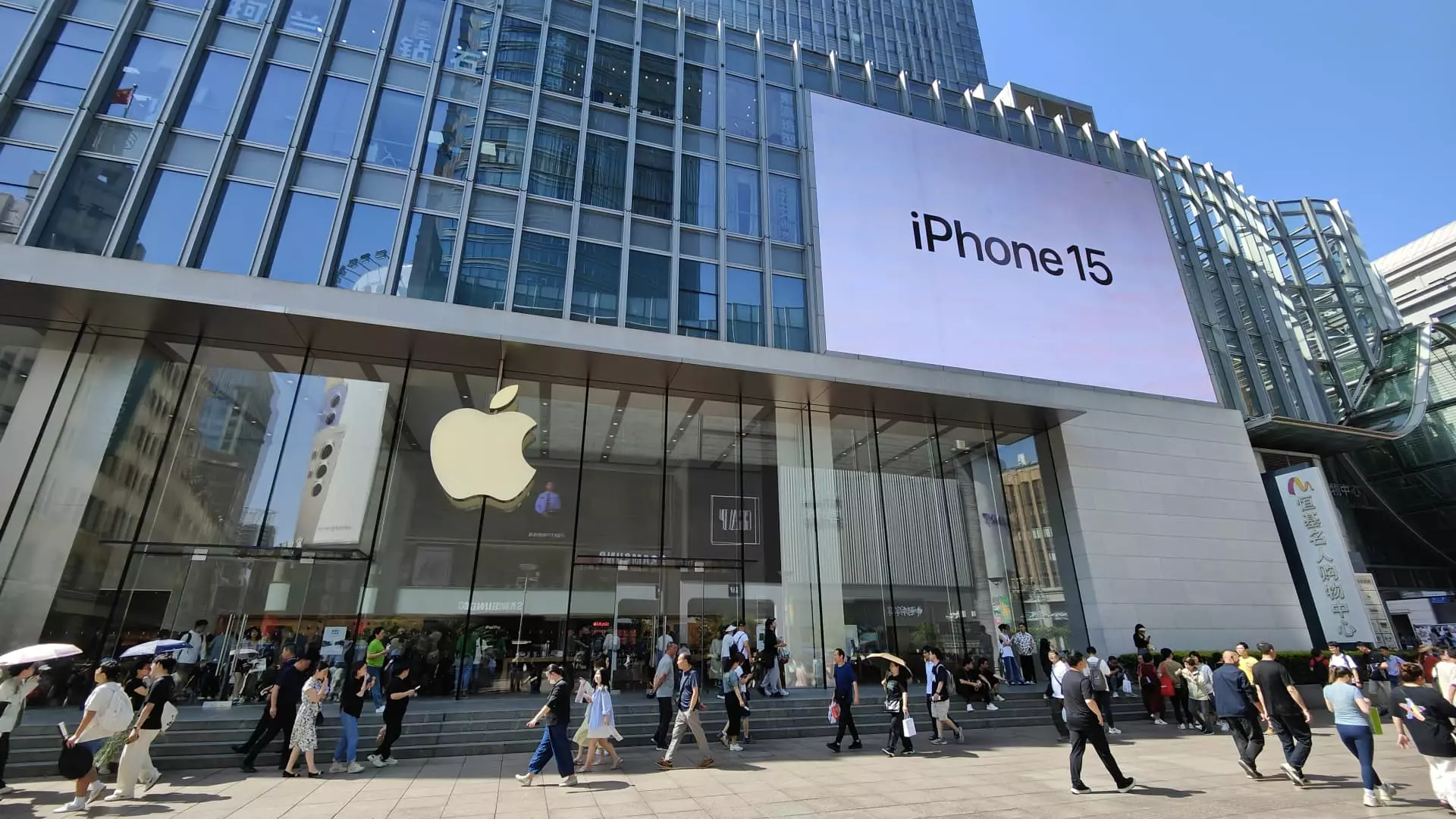Apple, once a dominant player in the Chinese smartphone market, has seen its market share drop significantly in the second quarter. According to a report by Canalys, Apple’s market share in China shrank to 14% in the second quarter, down from 15% in the first quarter and 16% in the same period a year ago. The company, which was ranked third in the market last year, has now dropped to the sixth spot with approximately 9.7 million units shipped. This marks the first time that all top five positions in the Chinese smartphone market are occupied by domestic vendors, signaling a major shift in the competitive landscape.
Chinese smartphone vendors such as Vivo, Oppo, Huawei, and Xiaomi have been making significant strides in the market, leveraging their high-end products and deep collaboration with local supply chains to gain an edge over international competitors like Apple. Vivo reclaimed the top spot in the market with a 19% market share and 13.1 million units shipped, driven by strong offline and online sales during the “618” e-commerce festival. Oppo maintained its second-place position with 11.3 million units shipped, buoyed by the successful launch of its new Reno 12 series. Huawei spinoff Honor came in third with 10.7 million units shipped, marking a 4% year-on-year increase. Huawei itself came in fourth with a 15% market share and 10.6 million units shipped, showcasing a resurgence in its consumer business following the launch of its Mate 60 smartphone. Xiaomi rounded out the top five with strong sales of its K70 and flagship 14 series, as well as the buzz surrounding its first electric car, the SU7.
As Apple faces increasing competition from Chinese vendors, it is looking to stabilize retail prices and protect margins for its channel partners in the country. Canalys suggests that localization of Apple’s Intelligent services in China will be crucial in the coming months, as Chinese brands continue to incorporate generative AI into their products to enhance user experiences. Apple’s shipments have been on the decline since the first quarter, when they dropped 25% year-on-year to 10 million units. The company will need to adapt to the changing market dynamics and intensifying competition from domestic players if it hopes to regain its footing in China.
Despite the challenges faced by international players like Apple, the Chinese smartphone market as a whole experienced a 10% year-on-year growth in the second quarter. With shipments exceeding 70 million units, the market remains a lucrative and competitive space for both domestic and international smartphone vendors. As Chinese brands continue to innovate and expand their offerings, it will be interesting to see how the landscape of the market evolves in the coming months.

